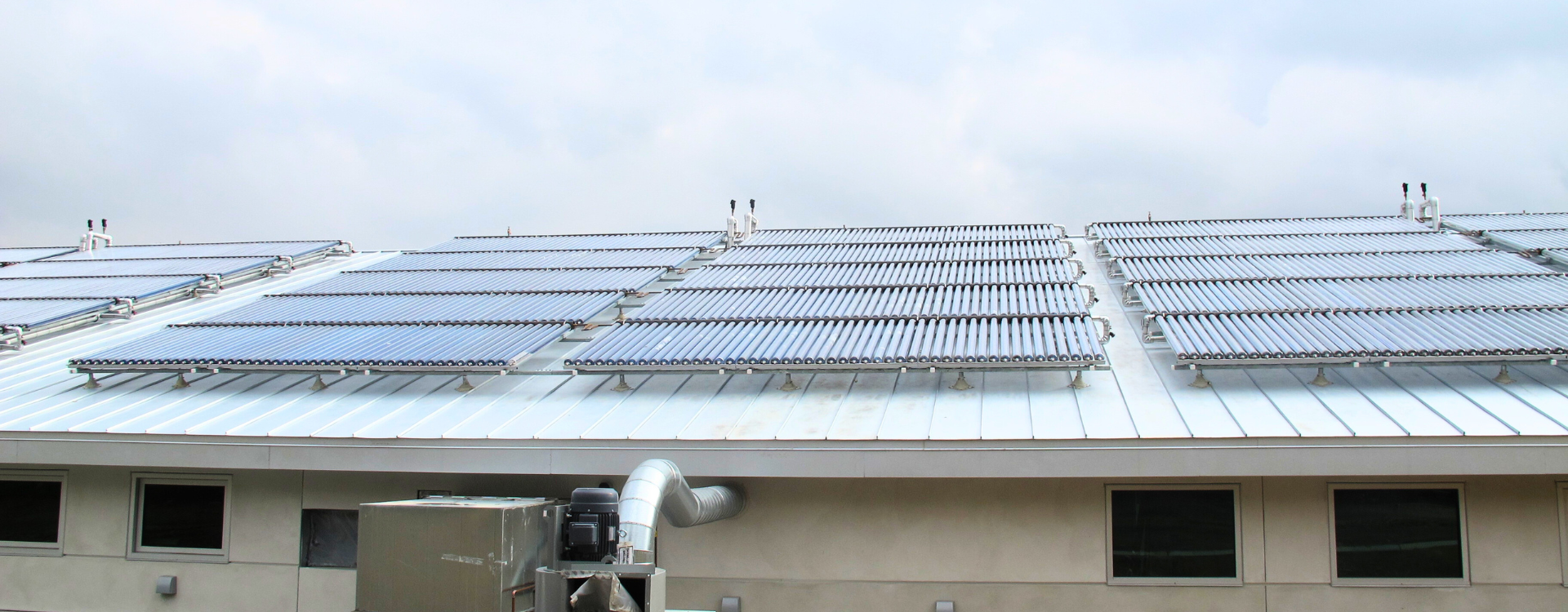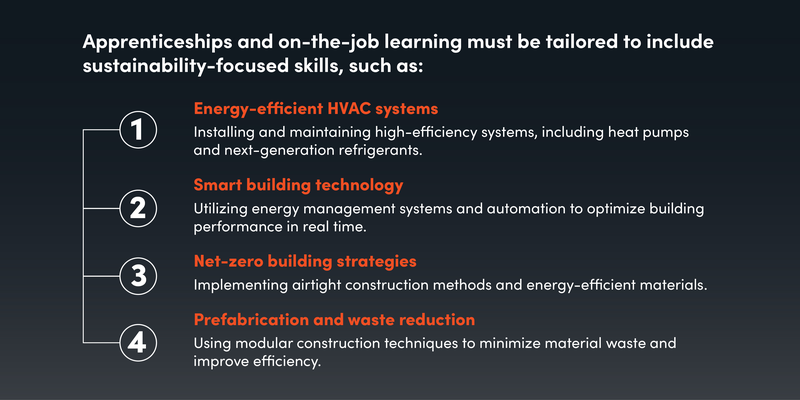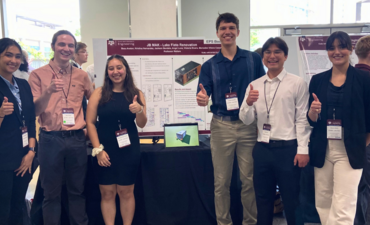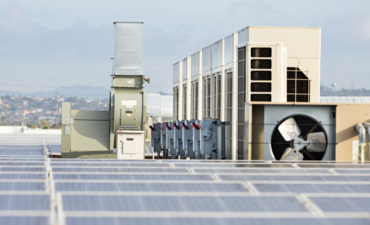
As we work toward a more energy efficient future, we face a pressing challenge: developing and maintaining a highly trained, skilled construction workforce that can implement sustainability practices.
With the skilled labor shortage impacting the AEC industry, it's more important than ever to develop the construction workforce of tomorrow — one that is equipped with the specialized skills needed to reduce carbon footprints and improve energy efficiency.
Training skilled trades professionals in energy efficient construction
The best way to build a skilled workforce is through hands-on training that goes beyond traditional construction methods.

Technology is advancing rapidly, and so are the expectations for sustainable building practices. If we don't train our workforce to meet these new standards, we risk falling behind.
Supporting construction workforce development through collaboration
Developing a skilled workforce requires collaboration between industry leaders, educational institutions, and policymakers. By working together, we create clear pathways for people to enter the trades with sustainability-focused training from day one.
One of the biggest challenges I see is the gap between education and industry needs. We need to remove barriers and make it easier for individuals to gain hands-on experience and certifications in sustainable construction practices. Partnerships between companies and training programs are essential for ensuring workers are equipped with the necessary skills.
Another key aspect is outreach. We must engage younger generations early, demonstrating that careers in the skilled trades are not only viable, but also essential to the future of sustainable infrastructure. Industry partnerships can help create training programs that bridge the gap between classroom education and real-world application.
Creating work environments that help talent stay
Equally important to training is retention — and that requires culture. As we bring in new talent to meet sustainability goals, we must also build work environments where people feel respected, supported, and valued.
Companies must actively foster cultures that promote fairness, collaboration, and a sense of belonging. When individuals — especially those from communities that haven't traditionally had a strong presence in the trades — feel welcomed and safe, they are more likely to stay, grow, and contribute meaningfully to the industry's evolution.
This includes providing everyone with the opportunity to grow, leadership that models psychological safety, and a commitment to addressing harmful workplace dynamics. Creating a culture that supports connection, and mutual respect is essential if we want to retain the skilled professionals we invest in training.
Building a sustainable future through workforce readiness
Sustainability in construction isn't just about materials and energy efficiency — it's about having a workforce ready to drive change. A skilled, adaptable team is crucial for delivering projects that reduce carbon footprints and improve energy efficiency.
Achieving lasting sustainability goes beyond technical skills. Workers must be equipped with the knowledge and mindset to embrace new solutions that minimize environmental impact. This requires ongoing learning and the ability to adapt to new challenges.
Building the construction workforce of tomorrow starts with investing in education, training, and collaboration today. The foundation we lay now will ensure that the skilled trades professionals of the future are equipped to lead sustainability efforts.
Preconstruction Executive
As Preconstruction Executive, Henry Nutt III brings a wealth of experience and knowledge to his position. With over 30 years as a union sheet metal worker, including 13 years with us as a general superintendent, he combines a hands-on, boots-on-the-ground type of approach with a focus on the practical theory of relationship building.



